Pentax K-5 IIs Review
Pentax K-5 IIs Performance - How well does it take pictures?
Ultimately, it is the image quality that makes a camera worth buying. For a digital SLR, image quality greatly depends on the lens used. While color, noise, contrast and exposure are properties of the camera, distortion, vignetting and chromatic aberrations are properties of the lens. Sharpness depends on the weakest link. So, a camera cannot capture more details than its lens lets through. Conversely, it is possible for a lens to transmit more details than the sensor can capture.
The Pentax K-5 IIs shows extremely low image-noise and improves upon the K-5 - the previous APS-C image quality champion - by one stop while preserving more fine details. Noise is virtually inexistent until ISO 800 and absolutely minimal at ISO 1600 and 3200. Noise becomes visible at ISO 6400 which only a slight effect on fine details. Noise becomes a little destructive at ISO 12800 which reduces prints to medium sizes.
The two extended ISO sensitivities show a noticeable performance drop, yet both ISO 25600 and 51200 remain usable for small-but-noisy prints. The K-5 IIs has 3 levels of noise-reduction which can be set independently for each ISO. It can be turned off but on-chip noise-reduction may still be happening since we notice smoothing at ISO 12800 and up. In practice this affects the amount of noise measured but not maximum print-size because noise-reduction blurs fine-details while it removes noise.
The Pentax K-5 IIs offers a choice of Multi-Segment, Center-Weighed and Spot metering. There are two distinct multi-segment metering systems, one for viewfinder shooting and the other for Live-View. The OVF metering system produces well-balanced exposures. It may clip bright highlights when they occupy a very small portion of the frame. The Live-View metering system is rather conservative and rarely clips highlights. Exposures often are often darker than expected though. Center-weight and spot metering both work just as expected and behave the same when using the viewfinder or Live-View.
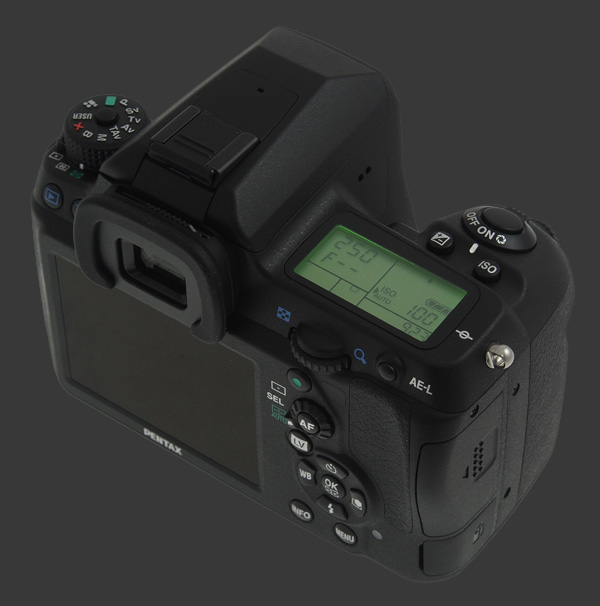
The Pentax K-5 IIs shows excellent hue accuracy. The Natural color mode is very close to reality, only slightly under-saturated. Adjusting Saturation to +1 makes it even better. Hue is spot on by default. The K-5 IIs has a wealth of image parameters including independent controls over the tone-curve of highlights, mid-tones and shadows. This lets more dynamic-range be captured while maintaining contrast where it is desired. The default Bright color mode is also great and gives image more punch with extra saturation and contrast but measurably less dynamic-range.
Sharpness is controlled in 9 steps along a Standard, Fine or Extra Fine scale. The lowest setting is very soft on any scale while the highest setting is rather sharp. The K-5 IIs, due its lack of an anti-alias filter, is considerably sharper than the K-5 and K-5 II. It therefore requires less sharpening and may shows artifacts quicker. The Fine scale, which sharpens fine details without sharpening noise, is completely artifact free at +2 and shows virtually none at +3 either.
Digital cameras have traditionally used anti-alias filters to avoid moire which is an artifact that may occur when taking pictures of extremely fine textures. The compromise avoids the artifact almost entirely for full-resolution images at the expense of critical sharpness. Now, with the K-5 IIs and a handful of other digital cameras, these artifacts could appear.
There are two solutions to eliminate moire, one before capture and one after. Diffraction causes a natural anti-alias filter and sets in around F/9.5 on the K-5 IIs. This means that any photographs taken at F/9.5 will have the same chance of moire as a camera with an anti-alias filter.
Pentax provides an excellent interface for changing image parameters. The most significant feature is a digital preview which is dynamically updated whenever an image parameter is changed. Another important detail is that the K-5 IIs changes the color of any setting that is not at its default value to yellow. Settings at their default values are shown in green. The final touch is a 6-sided color space representation which shows how colors are affected by image parameters. The second solution is too remove it in software. Lightroom, starting at version 4 has a dedicated tool to reduce moire. Eventually, digital cameras may do that themselves.White-Balance is very sophisticated and improved from its predecessor. Automatic White-Balance is available in two versions, one which completely corrects warm lighting and one which levels some warmth. On this digital camera, it finally performs exceptionally well. Preset white-balance either sets an exact color temperature or an approximate one, with the K-5 IIs ultimately-deciding what color-balance to use. Using Custom White-Balance, this digital camera produces perfectly neutral colors.
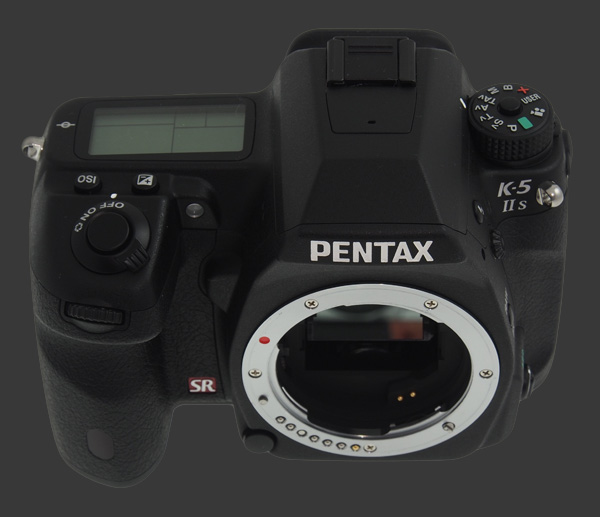
In operation, the Pentax K-5 IIs is very responsive. There are only a few moment where the photographer has to wait for the K-5 IIs. Startup, shutdown and shot-to-shot times are nearly instant. If instant review is enabled than it takes just over 1 second for the image to appear. This is slow for an advanced camera but it does not prevent the photographer from taking another shot before that.
The internal buffer-depth has changed compared to the K-5. It can officially handle up to 40 JPEG images or 20 RAW, up from 15 RAW. With a quick Sandisk Extreme Pro SDHC card rated at 95 MB/s, the K-5 IIs consistently managed 21 RAW files or 25 JPEG images, falling short of the specification for JPEG. Keep in mind that JPEG compression varies with details.
When enabling lens correction, either Lateral Chromatic Aberration or Distortion Correction, the instant review is not instant at all and takes around 4 seconds to appear. Still, the K-5 IIs does not lock-up and more shots can be taken very quickly. Most importantly, buffer-depth only shrinks to 18 images, unlike the K-5 which reduced it to 6 shots.
Image playback is very fast. Entering and exiting Playback mode is quick. Normal switching between images is nearly instant. It takes under ½s to start zooming into an image, then panning and zooming are fast. The K-5 IIs can switch between images while zoomed-in. This is a handy function for checking which image from a burst is the sharpest. In this case it takes 1½s to load the next image. The camera is almost always shooting-priority, so tapping the shutter-button returns it to Capture mode. Notable exceptions to this are when the camera performs a RAW conversion or HDR blending.
The Pentax K-5 IIs and K-5 II boasts a new SAFOX X autofocus system which is sensitive down to -3 EV and is only matched a singe full-frame DSLR which has yet to ship, the Canon EOS 6D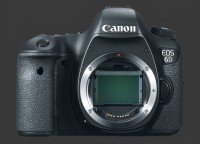
Canon EOS 6D. Just like AF system on the K-5, SAFOX X has 11-points and 9 of those are cross-type. Pentax improved tracking, allowing moving subjects to be tracked by adjacent points.
Focusing is extremely accurate and quite fast. The higher sensitivity is clearly noticeable and lets the K-5 IIs focus reliably in very low light. Autofocus speed has improved in the best cases and stayed the same in other cases. Among lenses tested, body-driven lenses showed the most improvement, locking focus in less than ¼s under typical conditions. SDM lenses showed highly variable performance. Some of them focused very fast, similarly to body-driven lenses. There were two extreme cases which took up to a full-second to move focus from infinity to a target 2 meters away.
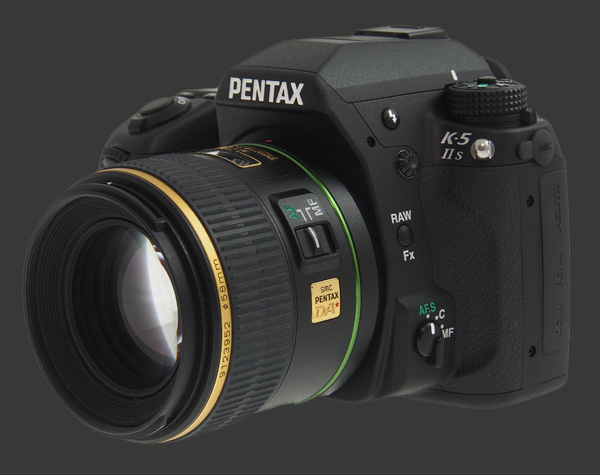
Autofocus speeds of the Pentax K-5 IIs depend very much on the lens used. It can focus very fast and match the performance of most mid-range DSLRs but still lags behind competing high-end models, including the Nikon D7000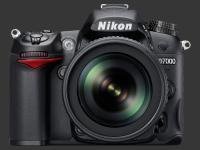
Nikon D7000. Even the latest generation mirrorless cameras from Olympus and Nikon can focus faster on average. This is the only important area where the K-5 IIs is not class-leading. Future lenses can clearly improve this and one would hope a firmware update for existing SDM lenses.
Although there is no formal procedure for measuring the performance of image stabilization, we can say that the Shake Reduction system in the K-5 IIs appears to be normally effective to around 3 stop. Battery-life is excellent, narrowly missing 1000 shots-per-charge according to the CIPA standard with 50% flash use.
The digital-level measures left-to-right tilt of the camera and shows it in ½° increments in the viewfinder and on the top status panel. The LCD shows tilt and pitch in ¼° increments. When Automatic Horizon Correction is enabled, the camera marks correction limits at 1° with Shake-Reduction enabled and at 2° when it off. The tilt indicator stays green as long as it is within the correction limits, otherwise it turns yellow. The pitch indicator turns yellow as soon as the camera is not level.
There is in-camera HDR merging for cases where the dynamic-range of a scene is too high for the camera. It comes in 3 strengths or Auto. To do this, the camera takes 3 exposures in 3 EV increments and blends them. The result is a scene of high-contrast rendered as a low-contrast one. This gives best results for scenes which do not exceed by much the camera's dynamic-range, otherwise it tends to look very artificial. The K-5 IIs can optionally perform image alignment in-camera. This necessarily reduces the field-of-view to accommodate for pixels which are not present in all images due to movement. It works quite well but prevents accurate framing through the viewfinder. Examples below from K-5 review.
 HDR Strong 1 |
 HDR Strong 2 |
 HDR Strong 3 |
Pentax K-5 IIs Conclusion
The Pentax K-5 IIs shows exceptional image quality, even beyond that of its excellent predecessor, the K-5. Most improved are sharpness due to the lack of anti-alias filter and image noise with greater retention of details. The new autofocus system is incredibly sensitive and performs, on average, slightly faster.
Image quality is unrivaled among cropped-sensor DSLRs with extremely low noise, class-leading sharpness, superb dynamic-range, natural image colors and outstanding white-balance. The unique RAW data recovery feature presents an entirely different image workflow, where one can shoot JPEG and only when needed turn the last capture into a RAW file and reprocess it either in-camera or one the computer. Still, the K-5 IIs has such sophisticated image parameters that one has a tremendous control over the look images.
Speed of the K-5 IIs is generally quite good. The camera rarely holds back its user. Shutter-lag and shot-to-shot speeds are very quick. The much improved autofocus system locks quickly under typical conditions and even in moderately low light with the right lens. Some SDM lenses slow it down considerably when light is low and this is the only actual issue with this DSLR. The instant review is slower than we would like but does not slow down the camera in any way.
The wealth of features present in the Pentax K-5 IIs and inherited from the K-5 helps photographers take better pictures. Having Automatic Horizon Correction, a large 100% coverage viewfinder and built-in Shake Reduction provides relief and allows him or her to pay greater attention to composition.
Ergonomics and controls are truly superb, particularly considering the compact size of the K-5 IIs. The Usability page of this review gives all the details. The point is that the K-5 IIs speeds up photography by giving extremely efficient access to most important photographic controls. The only disappointment feature is Live-View which falls short of previewing exposure and showing an accurate histogram.
The bottom line is that the Pentax K-5 IIs is an excellent camera which has almost every feature available to a DSLR. It brings flexibility and superior image quality to a variety of subjects in a compact and well thought-out design. This DSLR excels in low-light and is capable of producing very large and details prints. All this makes the K-5 IIs an excellent travel photography camera. For action photography where focus-speed is critical, the competition still shows a clear lead with their top-of-the-line APS-C and full-frame DSLRs.
 |
Please Support Neocamera
All information on Neocamera is provided free of charge yet running this website is a huge endeavor. Purchases made via affiliate links found throughout the site help keep it running and up-to-date. There is no additional cost to you, so please consider buying via these links to our affilates:
If you found any information on this site valuable and did not purchase via our affiliate links, please considering donating via PayPal:
Any amount will be greatly appreaciated. Thank you for your support!
Pentax K-5 IIs Highlights

Sensor-Size: 24 x 16mm

Actual size when viewed at 100 DPI
| 16 Megapixels DSLR | ISO 80-51200 |
| Pentax K Mount 1.5X FLM | Shutter 1/8000-30s |
| 3-Axis Built-in Stabilization, 3-Stop Improvement | Full manual controls, including Manual Focus |
| 100% Coverage Large Viewfinder | Custom white-balance with 2 axis fine-tuning |
| Auto Horizon Correction 2 Axis Digital Level | Spot-Metering |
| Weatherproof down to -10C | Hot-Shoe & Sync-Port |
| Built-in Dust Reduction | Stereo audio input |
| 7 FPS Drive, 40 Images | Lithium-Ion Battery |
| 1920x1080 @ 25 FPS Video Recording | Secure Digital Extended Capacity |
| 3" LCD 920K Pixels |
Pentax K-5 IIs vs K-5 II vs K-5
The only difference other than the model number between the K-5 IIs and K-5 II is that the latter lacks an anti-alias filter. The K-5 II should perform very similarly while recording extremely fine details with less sharpness.
Compared to the K-5, there are only three notable differences:
- Imaging Sensor: The K-5 IIs and K-5 II sensor has been revised an gains one full ISO stop of usability.
- Autofocus System: The new SAFOX X is much more sensitive in low-light and marginally faster on average.
- LCD: The rear LCD has a gapless design which improves visibility and contrast in bright light. It is also slightly recessed, making it slightly less prone to smudges.
In terms of overall performance other than image quality and autofocus, Pentax has tweaked the K-5 IIs. Color accuracy is a tiny bit better but automatic white-balance is considerably more reliable. Metering through the viewfinder appears improved as well. Finally, the in-camera lens-corrections are more efficient on the newer models.
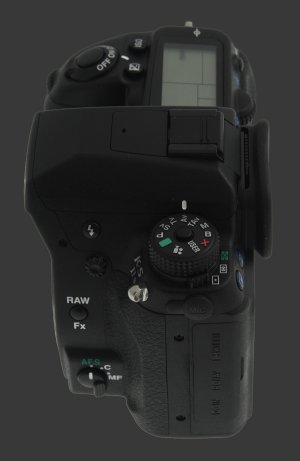
Updates
2025.01.18

Fujifilm GFX 2025 Lens Roundup
Lens Review roundup of Fujifilm GFX Medium-Format lenses. Quality, performance and handling of the GF20-35mm F/4R WR, GF30mm F/3.5 Tilt-Shift and the GF55mm F/1.7.
2024.11.18

Best 2024 Photography Gifts for Every Budget
Great gifts for photographers and photo enthusiasts selected for every budget among the best products of 2024.
2024.08.07

Eye Protection Tips for Professional Photographers
The four main considerations for professional photographers regarding eyewear.
2024.07.14

Fujifilm X100VI Review
Flagship fixed-lens compact digital camera with a 40 MP sensor and Image-Stabilization, a first for the series. Retro design featuring dual control-dials, plus direct ISO, Shutter-Speed and EC dials. Its hybrid viewfinder can switch between EVF and OVF mode.
2024.05.09

Fujifilm GFX100 II Review
Flagship 102 Megapixels Medium-Format Mirrorless Digital Camera with 8-Stop 5-Axis IBIS, 8 FPS Drive, 8K Video and 400 MP Super-Resolution capture in a weatherproof and freezeproof body with dual control-dials and dual memory-card slots.
2024.04.03

Fujifilm X-T5 Review
Newest Fujifilm flagship boasting a 40 MP APS-C sensor, 5-axis IBIS with 7-stop efficiency, 15 FPS continuous drive, 6.2K Video capture, dual control-dials and dual SDXC UHS-II slots in a sturdy weatherproof and freezeproof body.
2023.11.20

Best Digital Cameras of 2023
Find out which are the Best Digital Cameras of 2023. All the new Mirrorless Digital Cameras from entry-level to high-end professional.
2023.07.10

Fujifilm X-H2 Review
40 Megapixels APS-C Hybrid Mirrorless Digital Camera with 7-stop IBIS. Fastest shutter ever and 8K video capture. Large builtin EVF with 0.8X magnification and 5.8 MP, plus an Eye-Start Sensor. Packed with features and large number of controls in a weatherproof and freezeproof body.
2023.05.07

Sony FE 20-70mm F/4G Review
Review of the unique Sony FE 20-70mm F/4G lens. The optical zoom of this lens spans ultra-wide-angle and medium focal-length coverage, making it one of the most versatile Full-Frame lenses on the market.
2023.01.15

Huion Inspiroy Dial 2 Review
Review of the Huion Inspiroy Dial 2 tablet, a medium sized drawing surface with dual dials and customizable buttons. Connects via USB-C or Bluetooth 5.0 with Windows, Linux and Android support.
2022.12.08

How to Pack for a Photo Trip
Find out how to pack for a travel photography trip, carry your gear safely while meeting airline regulations.
2022.11.13

Best Digital Cameras of 2022
The best digital cameras of 2022. A short list of the most outstanding models in their respective categories. Choose one for yourself or as a gift.













